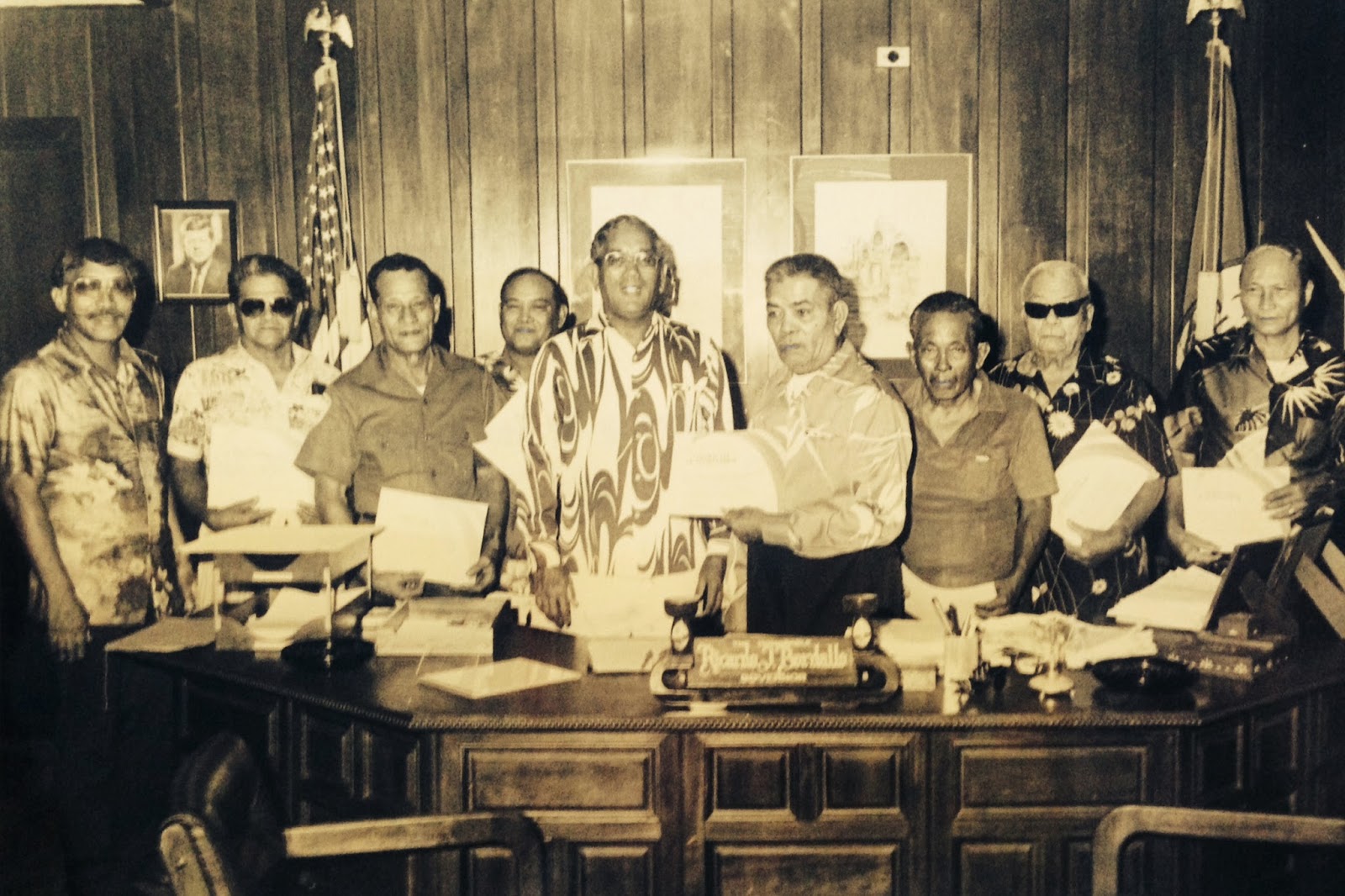Christmas 1947
But as Chamorros have become more intimately connected to the US military they have also become more intimately connect to the United States as a nation. They take on more of the patriotism of being a part of the country, even if Guam remains a colony. They use the language of shared community, sacrifice for home territory and defense of democracy and freedom even if as Guam remains a colony each of those things should be ridiculously covered in asterisks.
In addition to the Chamorros that join the regular US military, there is a list of Chamorros who supported the US military and fought and died but were irregular parts of it. Some examples of these are, The Guam Scouts, The Insular Guard, The Guam Combat Patrol and the Wake Island Defenders. During World War II each of them suffered, but they have often had to fought and wait to be recognized or be commemorated officially for their service. The image above is of members of the Guam Combat Patrol with the late Governor Ricardo J. Bordallo.
The Guam Combat patrol was a police unit of around two dozen men who
specialized in hunting Japanese stragglers (who refused to surrender even
though the war was officially over) from 1945-1948. While much of the island struggled to regain some sanity and rebuild, these Chamorro men scoured the island for the stragglers that they knew were still out there, refusing to surrender, keeping the war alive in their minds.
Below is an account of the Guam Combat Patrol, in an attack that cost them one of their members.
***********************
Before Christmas
of 1947…a farmer heard someone walking around his ranch at night and saw a
Japanese with a big machete…He abandoned his ranch and the next morning came
into the Yigo police substation. Guam Police Staff Sergeant Juan Unpingco Aguon sent patrol members to investigate. The
patrolmen tracked the Japanese to a rocky cliff area on the coastline and saw a
tin shack in which the stragglers lived.
The Japanese
laid an ambush for the patrolmen. Antonio Manibusan was pointman that day and
he was the first around the rock to the shack. He was killed instantly by a
furious fusillade of Japanese rifle fire. The fire was so hot the patrolmen had
to leave Manibusan’s body and retreat down the cliffs. The next morning they
were reinforced by other patrol members and retrieved Manibusan’s body. They
found that his face had been smashed in by rifle butts.
They destroyed the
shack and went so far as to break and punch holes in the utensils they found
there. They posted messages in Japanese telling the Japanese the war was over
and they would not be harmed if they surrendered. The combat patrol camped a
mile away from the shack waiting for signs of the Japanese. Three weeks later,
three stragglers approached carrying white flags.
According to Guam Combat Patrol member Felix Wussitg, “I wanted to
fire on them, but our officers were very strict about observing the rules of
war.”




Comments